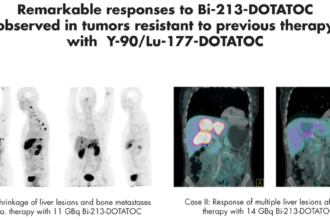 NPR released an article recently that talked about the Invisible Gorilla Study, which is a piece of research that explains why when you ask someone to perform a challenging task their attention narrows and blocks out other things.
NPR released an article recently that talked about the Invisible Gorilla Study, which is a piece of research that explains why when you ask someone to perform a challenging task their attention narrows and blocks out other things.
 NPR released an article recently that talked about the Invisible Gorilla Study, which is a piece of research that explains why when you ask someone to perform a challenging task their attention narrows and blocks out other things. This behavior is called “inattentional blindness” and when a similar study was conducted with radiologists, 83% of them missed the gorilla in the image. This was due to the fact that the radiologists in the study weren’t focused on looking for a gorilla, but the lesions, tumors, etc. that they seek out on a routine basis.
NPR released an article recently that talked about the Invisible Gorilla Study, which is a piece of research that explains why when you ask someone to perform a challenging task their attention narrows and blocks out other things. This behavior is called “inattentional blindness” and when a similar study was conducted with radiologists, 83% of them missed the gorilla in the image. This was due to the fact that the radiologists in the study weren’t focused on looking for a gorilla, but the lesions, tumors, etc. that they seek out on a routine basis.
A statistic like this can raise some questions among patients and the radiological community in general. The most obvious question being that if radiologists are looking for something specific, does this mean that they could miss signs that aren’t tied to an exam’s original purpose?
We reached out to Dr. Roger Eng, chairman of radiology, Chinese Hospital, and president of Golden Gate Radiology Medical Group, to get some answers about ‘inattentional blindness’ and what radiologists can do to combat it.
Is there technology available that might help address ‘inattentional blindness’?
Recently, there has been more interest among vendors in addressing performance and quality aspects of the interpretive part of imaging. How does a radiologist approach evaluating an Abdominal CT scan? Followed by: how does he communicate those findings in written format to the referring clinician and/or patient? PACS systems may eventually offer the ability to double check if the radiologist mentioned specific findings or aid in identifying potential pathology outside of the breast and lung. Systems that decrease interruptions and allow the radiologist to focus more on interpretation itself will also help.
Can a radiologist train him/herself to overcome ‘inattentional blindness’?
A large body of evidence has shown there is significant variability in interpreting imaging studies. Part of this is due to inherent limitations in imaging technology differentiating normal from abnormal, along with the human error component. We also cannot underestimate the importance of clinical context of an imaging exam which is the interplay of multiple disparate data points from laboratory to patient history. IBM’s Watson supercomputer can trounce the best Jeopardy champion in raw knowledge, but cannot match the relational capabilities of human brain.
Radiologists may find answers from other industries where organizations and their personnel standardize workflow processes. Airline pilots and their checklists is the most obvious example that comes to mind.
Do you personally do anything to guard against this?
My practice approaches each imaging modality in a consistent algorithm. This workflow process is adjusted as data presents an improved way. Moreover, I am fortunate to be using RIS and PACS technology that minimizes the extraneous steps and distractions that can lead to inattention blindness.
(image: inattentional blindness & gorilla study/shutterstock)









